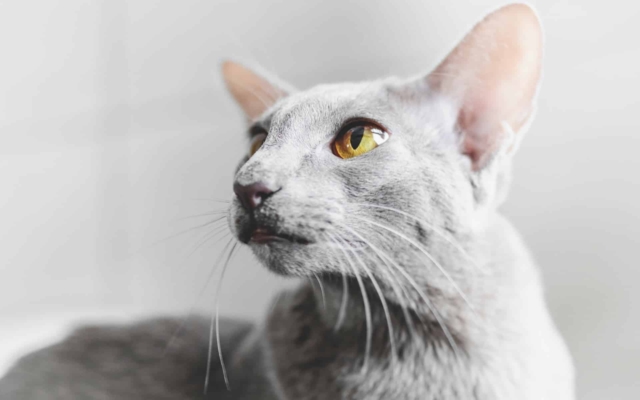
Cats, with their independent and sometimes aloof nature, have long been known for their mysterious ways. One aspect of their behavior that often puzzles cat owners is cat dominance. Understanding cat dominance is crucial for maintaining harmony in a multi-cat household and ensuring the well-being of your feline companions.
Cat dominance refers to the hierarchical order established among cats, where one cat asserts its authority over others. This dominance is not necessarily aggressive or harmful; it is a natural behavior rooted in the instinctual need for survival and territorial control. By understanding the signs of cat dominance and the factors that contribute to it, you can create an environment that fosters a peaceful coexistence among your furry friends.
Signs of cat dominance
Recognizing the signs of cat dominance is the first step in deciphering the power dynamics within your feline family. One common sign is territorial marking, where dominant cats will use their scent glands to mark their territory. They may rub their cheeks on furniture or walls, leaving a scent that signals their ownership. Additionally, dominant cats often display body language that communicates their status, such as a confident stride, tail held high, and direct eye contact.
Another indicator of cat dominance is resource guarding. Dominant cats will assert their control over valuable resources like food, water, and litter boxes. They may intimidate other cats by growling, hissing, or even physically blocking access to these resources. Paying attention to these behaviors will help you identify the dominant cat in your household and take appropriate steps to manage their interactions.
The importance of establishing hierarchy
Establishing a hierarchy within a multi-cat household is crucial for maintaining a peaceful environment. Without a clear hierarchy, cats may engage in constant power struggles, leading to stress and anxiety. By establishing a hierarchy, you provide each cat with a sense of security and reduce the likelihood of conflicts.
Hierarchy among cats is a natural occurrence in the wild, where it ensures efficient resource allocation and minimizes physical confrontations. In a domestic setting, mimicking this hierarchy is essential for a harmonious coexistence. By acknowledging and respecting the dominant cat’s authority, you create a stable environment that reduces tension and promotes a sense of safety among your feline companions.
Factors that contribute to cat dominance
Several factors contribute to the establishment of cat dominance. One crucial element is age. Older cats often assert their dominance over younger ones, using their experience and physical strength to maintain control. Additionally, gender can play a role, as male cats tend to be more dominant than females. However, keep in mind that individual personalities and past experiences also influence dominance. Some cats have naturally assertive personalities, while others may become dominant due to past traumatic experiences or lack of socialization.
Another factor that can contribute to cat dominance is the presence of intact (unneutered/unspayed) cats. Hormonal changes can heighten territorial instincts and increase the likelihood of dominance behaviors. Spaying or neutering your cats can help reduce these instincts and create a more harmonious atmosphere within your multi-cat household.
Tips for managing cat dominance in multi-cat households
Managing cat dominance requires a proactive approach to ensure the well-being of all cats involved. Here are some tips to help you maintain a peaceful coexistence:
- Provide ample resources: Ensuring that each cat has access to its food, water, litter box, and resting areas is crucial. Having enough resources reduces competition and minimizes the potential for dominance-related conflicts.
- Encourage positive interactions: Engage in interactive play sessions with all your cats to foster positive relationships. Playtime helps release pent-up energy and redirects any potential aggression or dominance-related behaviors.
- Create vertical spaces: Cats feel secure when they have vertical spaces to retreat to. Install cat trees, shelves, or perches to give each cat its own space away from potential conflicts. Vertical spaces also provide an opportunity for cats to establish their dominance in a non-confrontational manner.
- Individual feeding stations: If resource guarding is an issue, consider providing separate feeding stations for each cat. This ensures that each cat can eat without feeling threatened or anxious.
- Positive reinforcement: Reward desirable behaviors and redirect any negative behaviors using positive reinforcement techniques. This helps establish a positive association with appropriate conduct and discourages dominance-related aggression.
Techniques for establishing yourself as the dominant figure
Establishing yourself as the dominant figure in a multi-cat household can help manage cat dominance and maintain peace. Here are some techniques to assert your authority:
- Set boundaries: Establish clear rules and boundaries for your cats. This includes areas that are off-limits, acceptable behavior, and consistent routines. By setting and enforcing these boundaries, you establish yourself as the leader and reduce the likelihood of dominance-related conflicts.
- Provide discipline: When necessary, provide gentle discipline to discourage undesirable behaviors. This can include using a firm voice, clapping your hands, or redirecting the cats’ attention to a more appropriate activity. Consistent and fair discipline helps establish your authority without resorting to aggression.
- Establish a routine: Cats thrive on routine. By providing consistent feeding times, play sessions, and grooming routines, you establish yourself as the reliable provider of their needs. This reinforces your role as the dominant figure and helps reduce potential power struggles among your cats.
Common misconceptions about cat dominance
There are several common misconceptions about cat dominance that can lead to misunderstandings and inappropriate responses. It’s important to debunk these misconceptions to ensure a proper understanding of cat behavior:
- Dominance is not the same as aggression: Dominant cats may display assertive behaviors, but they are not necessarily aggressive. Aggression involves intent to harm, while dominance is an instinctual behavior rooted in survival and territorial control.
- It’s not about being alpha: The concept of an “alpha” cat has been debunked by researchers. Cats do not have a linear dominance hierarchy like wolves or dogs. Instead, they establish a more fluid hierarchy based on individual relationships and situational dynamics.
- Dominance can be managed: Cat dominance is not an unchangeable trait. With proper management techniques and a supportive environment, dominance-related behaviors can be minimized, creating a more harmonious living situation.
The role of gender in cat dominance
Gender can play a role in cat dominance, with male cats generally exhibiting more dominant behaviors than females. This is partly due to hormonal influences, as intact male cats have higher levels of testosterone. However, it’s important to note that individual personalities and past experiences also shape dominance. Not all male cats are dominant, and not all female cats are submissive. Each cat’s unique traits and experiences contribute to their behavior and status within the hierarchy.
Seeking professional help for severe dominance issues
In some cases, cat dominance can escalate into severe issues that require professional intervention. If your cats’ behavior becomes aggressive, dangerous, or poses a risk to their well-being, seeking the help of a professional animal behaviorist or veterinarian is crucial. These experts can assess the situation, provide tailored advice, and develop a behavior modification plan to address the underlying causes of the dominance issues.
Conclusion
Understanding cat dominance is essential for maintaining a peaceful and balanced environment in a multi-cat household. By recognizing the signs, establishing hierarchy, and implementing appropriate management techniques, you can foster a harmonious coexistence among your feline friends. Remember, cat dominance is a natural behavior rooted in instinct, and with patience, consistency, and understanding, you can decode the power struggle and create a loving and balanced home for your beloved cats.
If you’re experiencing severe dominance issues or need professional guidance, reach out to a certified animal behaviorist or veterinarian specializing in cat behavior for expert advice.
If you enjoyed my article, I would appreciate you sharing it with your network.

Sima Ndlebe
Sima writes for CatBuzz. He is interested in Cats, Health and Fitness, and Entrepreneurship.
Published: 1 November 2023



